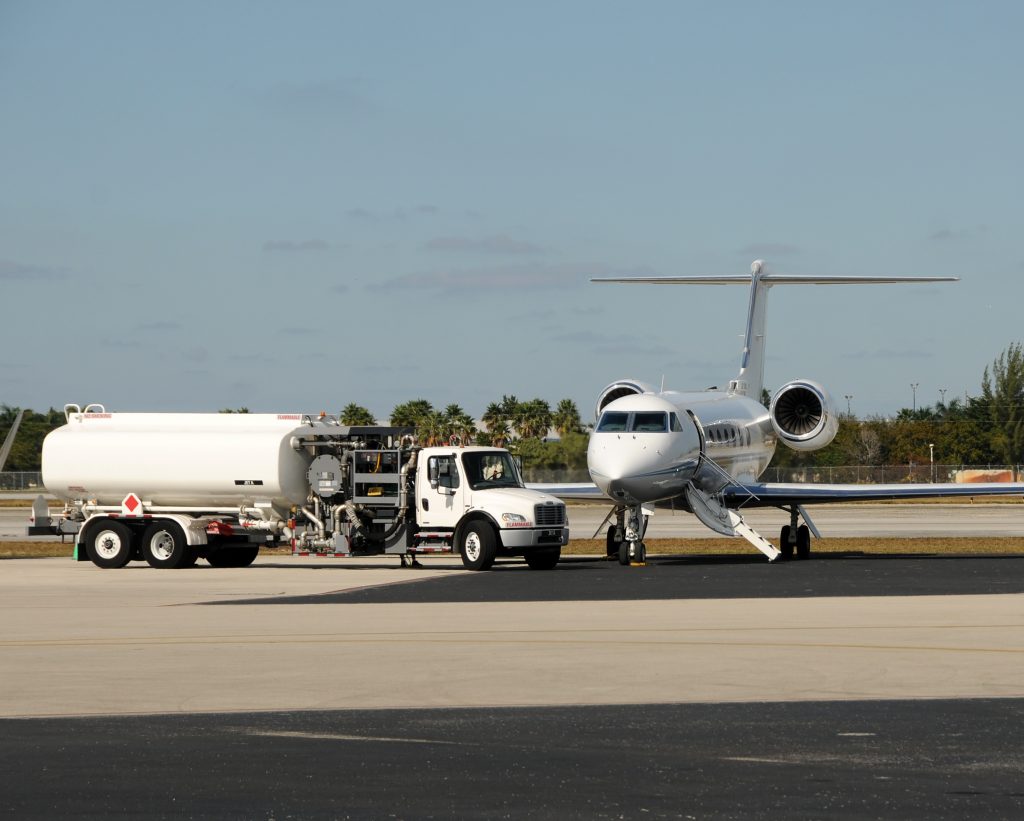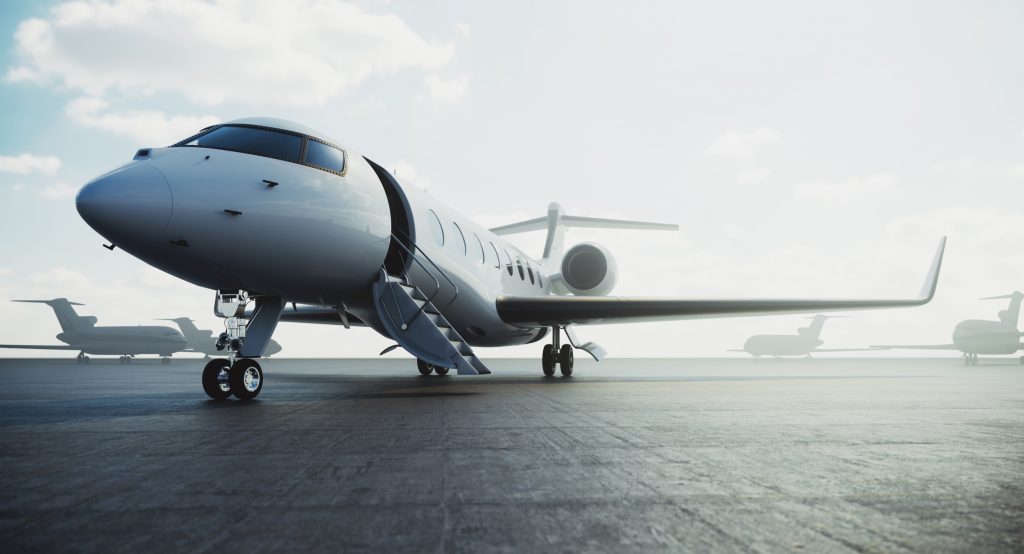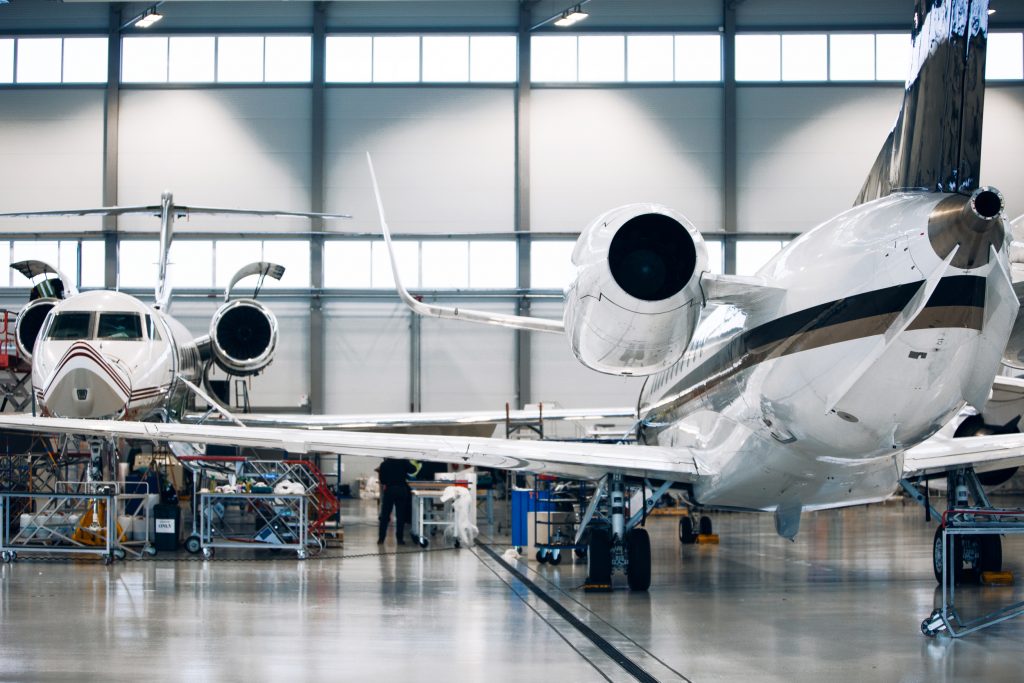Switch to:
 EN
EN  Português (PT)
Português (PT)  Español (ES)
Español (ES)
If you are a regular user of executive aviation and air taxis, the possibility of at least checking on the purchase price of a private jet must have crossed your mind.
After all, that would end the scheduling conflicts, the commitment to third parties, and the impossibility of choosing your preferred aircraft, right? You would have a plane of your own to go where you wanted, when you wanted.
Surely, this is a tempting thought. But is it – even with the financial viability of carrying out an operation of this type – worth investing in the purchase of an airplane instead of opting for a charter? To make this kind of decision, you need to know in advance what the costs involved in each of these choices are.
How Much Does It Cost to Charter a Jet?
Everything will depend on the chosen aircraft, the number of passengers, the type of take-off and landing runways required, and the embarkation and disembarkation destinations. But when calculating the price, the estimated rental costs per hour or kilometer traveled are taken into account; landing fees at airfields; the operator’s fixed base service (FBO) in relation to the handling and use of the jet terminal; and overnight stays, among others.

On top of this entire chain of costs, from fixed to variable, operators calculate the final prices to be presented to the public, with a slight margin on the operating expenses. Many companies also set a minimum fee or distance to ensure travel is viable. On smaller itineraries, this typically ranges from one to two hours of flight time.
Another factor that impacts the value of chartering a jet: the flight coefficient. What does that mean? It is an indicator that estimates the true distance traveled by the aircraft between embarkation and disembarkation. When we calculate routes on a map, we think of straight lines, but in reality planes – whether due to airport traffic, geography, or military infrastructure – do not travel on straight itineraries.
The operator can therefore charge up to about 15% more than the quote on short routes. On longer trips, it is the convention of companies not to apply the coefficient or to opt for a symbolic fee of around 3%.
With this in mind, a jet trip between São Paulo and Rio de Janeiro or Curitiba, short itineraries, costs approximately R$ 27 thousand and R$ 33 thousand with entry-level models, with capacity for 6 or 5 passengers, such as the Phenom 100 , the Honda Elite or the Citation CJ1 . A flight between São Paulo and Tokyo aboard a long-range jet starts at R$2 million, and can reach up to triple that in more sophisticated models.
How Much Does It Cost to Maintain a Jet?
Having one’s own aircraft at one’s disposal, we argue, is much more complex than having the money and the will to acquire it. It is not enough to make the investment and “take it home”. Therefore, it is important to understand every detail of the costs of owning a jet before making a decision in this regard.
At the beginning, you must make a decision: do you choose a new aircraft or a used model? With the first option, you’ll likely fork out significantly more, but you’re likely to incur less expense for maintenance and upgrades in the long run. If you choose a used aircraft, the investment will be lower, but there is a risk of more maintenance costs and not having access to the latest technologies.
And the payment? You’re unlikely to find a used jet that’s worth less than $3 million. From then on, prices can reach close to $70 million. At the current US dollar exchange rate (around R$5.60), it is certainly a heavy investment. The most common mode of aircraft acquisition today is via leasing

Where you can rent the aircraft for a specified period with a company, paying monthly installments, in addition to a down payment. Depending on the agreement made, at the end of this contract, the aircraft (a) has its lease renewed, (b) is returned to the lessor, or (c) is definitively acquired by the user at its market value.
But if you agreed to invest in your jet and are already counting on the maintenance of the aircraft, what other expenses should be calculated? The first is the hangarage – that is, the safekeeping of your aircraft in a hangar – a value that can vary greatly depending on the region of service.

In addition, it is necessary to invest in fuel, landing fees, salary and crew training, insurance, avionics information systems (purchased via subscription), navigation and terrain databases, charts and maps, the aircraft’s communication system, and, not least, on licenses. An operation of many steps and details.
It is difficult to estimate exactly the maintenance costs due to the numerous variables, but the estimate is that, at least, a stationary plane requires R$70,000 per month. Medium-sized aircraft can reach a monthly investment of R$200,000. The more utilized, complex, and sophisticated the jet, the higher the value.
What Is It Really Worth?
Now that you know all the financial details about renting or buying a jet, it’s time to put every expense on the tip of the pen and calculate what’s worth it to you.
In terms of comfort, having your own plane is a way to ensure that you can always travel when you choose. Everything can be customized to your liking and all the details of the operation will be under your supervision.
On the other hand, in terms of practicality, chartering guarantees you that there is no headache when planning your trip. Just indicate the places, times, and passengers, and leave everything in the hands of specialized people.
In terms of cost, this relationship becomes more complex. For someone who travels a lot, investing in a jet can really make sense. There are those who estimate that the ideal use, to be worthwhile, should be between 200 and 400 hours flown per year. Less than this range, and it will most likely be preferable to keep the charter.
But there is no magic calculation or right answer. Everything will depend on your reality, demand, and the value of the chartered/acquired aircraft. The important thing is to take all the details exposed here when making the decision.
There are intermediate options such as shared ownership of aircraft. In this system, each interested party acquires a share of a jet, becoming a partial owner of the asset. The entire operation is performed by an administrator. There are, however, risks of scheduling conflicts. Another option: buy a jet and outsource its administration – which will certainly make the process even more expensive, but will save you time. In this model, it is even possible to rent your aircraft when you do not want to use it, as a way of reducing the investment.
Why rent or buy your jet with Flapper
Flapper is a highly acclaimed company that has brought together 30,000 content clients from all over the world. Booking a flight with Flapper is much more than just a transaction. It’s a trip to explore executive aviation from a new point of view. We are rated “Excellent” on TrustPilot and maintain impeccable safety records.

We offer a personalized service in different countries, 100% adapted to your needs.

Thanks to our technology, we are able to respond quickly and offer numerous payment options.

Choose from over 100 different types of jets, helicopters and turboprops.
Contact
Do you prefer to get in touch via Email or Whatsapp to personalize your itinerary? Just click the button below. Your private aircraft is just a click away!
